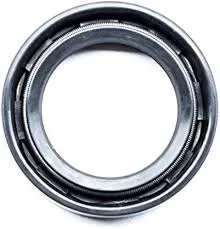10 月 . 31, 2024 00:07 Back to list
auto head gasket
Understanding Auto Head Gaskets Importance, Symptoms, and Replacement
The head gasket is a critical component in an automobile's engine, serving as a seal between the engine block and the cylinder head. Its primary function is to maintain pressure within the combustion chamber while preventing coolant and oil from mixing. Despite its small size relative to the engine itself, the head gasket plays a pivotal role in ensuring optimal engine performance and longevity.
Importance of the Head Gasket
The head gasket not only seals the combustion chamber to keep it pressurized, but it also helps to maintain the engine's cooling system by sealing the coolant passages. This dual function is vital for the engine's efficiency and overall functionality. A well-functioning head gasket enables the engine to produce power effectively while minimizing emissions.
Common Symptoms of a Failing Head Gasket
Over time, a head gasket can wear down or become damaged due to factors such as overheating, poor maintenance, or engine age. Recognizing the symptoms of a failing head gasket is crucial for preventing severe engine damage. Some common signs include
1. Overheating Engine One of the clearest indicators of a head gasket problem is an overheating engine. If your vehicle temperature gauge frequently rises into the red zone, it may be due to a compromised head gasket.
2. Coolant Leaks A blown head gasket may lead to coolant leaking from the engine. This can manifest as puddles under the vehicle or a noticeable drop in coolant levels.
auto head gasket

3. White Smoke from Exhaust If you notice white smoke or steam coming from the exhaust, it may indicate that coolant is leaking into the combustion chamber and burning alongside the fuel.
4. Oil Contamination Another telltale sign of a head gasket issue is the mixing of oil and coolant. This can create a milky substance on the oil dipstick or under the oil cap, indicating that the head gasket has failed.
5. Reduced Engine Performance A failing head gasket can also lead to a loss of power, poor acceleration, and engine misfires due to the improper sealing of the combustion chamber.
Replacement Process
Replacing a head gasket is a complex and labor-intensive process. It typically involves disassembling several engine components, including the cylinder head, intake, and exhaust manifolds. Given the intricacies involved, it is advisable to seek professional assistance for this type of repair.
Before replacement, it's essential to diagnose the underlying cause of the head gasket failure to prevent recurrence. After installing a new head gasket, proper reassembly and torquing specifications must be adhered to ensure longevity and reliability.
In conclusion, the head gasket is an essential component that ensures your engine runs smoothly. Regular maintenance and prompt attention to symptoms of failure can help prevent extensive damage and costly repairs. By understanding the role of the head gasket, you can better appreciate the importance of this often-overlooked engine part.